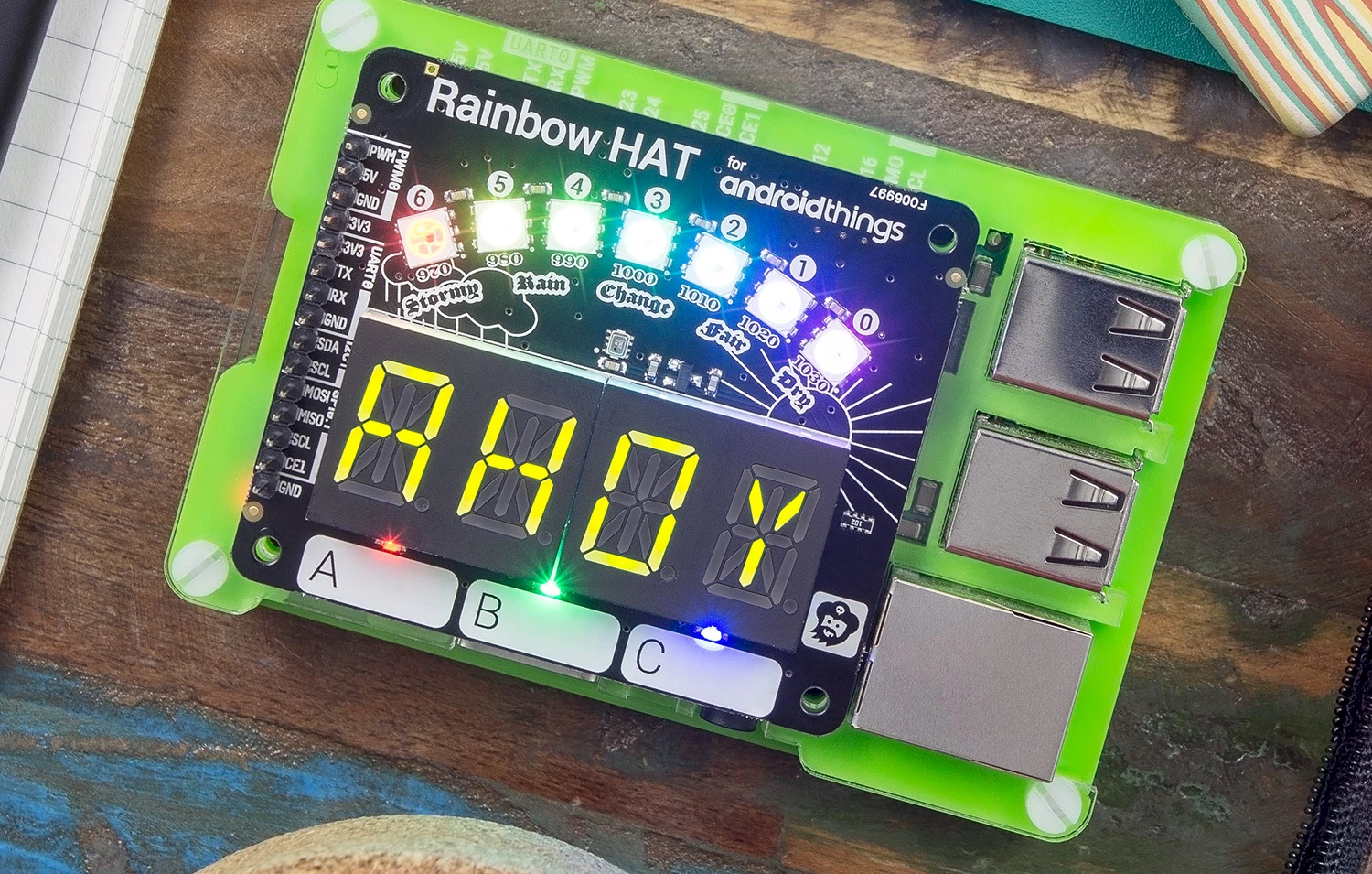Android Things 1.0 official launch

The Android Things Rainbow HAT from Pimoroni. © Pimoroni Ltd.
During its annual developer conference, Google officially announced the launch of its Internet of Things platform. Like Android TV, Android Automotive or Wear OS, Android Things is a version of the Android operating system specifically designed to work on connected devices, which don’t really need a full user interface like you would for a smartphone or a laptop. You could say that Android Things is a super-light version of the OS. Google’s solution is unique as it comes with a centralized update mechanism, which is important as it guarantees the security of the connected device. With Android Things, Google, rather than the device developers, is responsible for sending the new updates. This ensures that each time a new Android security patch is released, it is automatically sent to Android Things devices (in contrast to the delays for Android phones, which are often considerable). Developers will be able to manage software updates for fleets of connected devices using an online interface dubbed Android Things Console. The downside of this system is that only Google-approved hardware platforms are able to use Android Things. For the 1.0 version, only NXP i.MX8M, Qualcomm SDA212, Qualcomm SDA624 and MediaTek MT8516 Systems on Models (SoMs) are supported. For prototyping only, the NXP i. MX7D and Raspberry Pi 3 Model B can be used. For each device, Google is offering three years of free updates. Its pricing model still isn’t clear, nor is it clear what exactly will happen after three years.
⇨ Ars Technica, “Android Things 1.0 launches, Google promises 3 years of updates for every device.”
